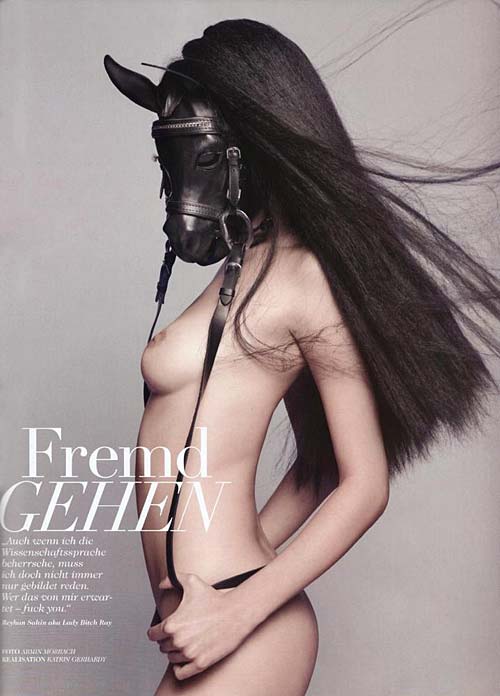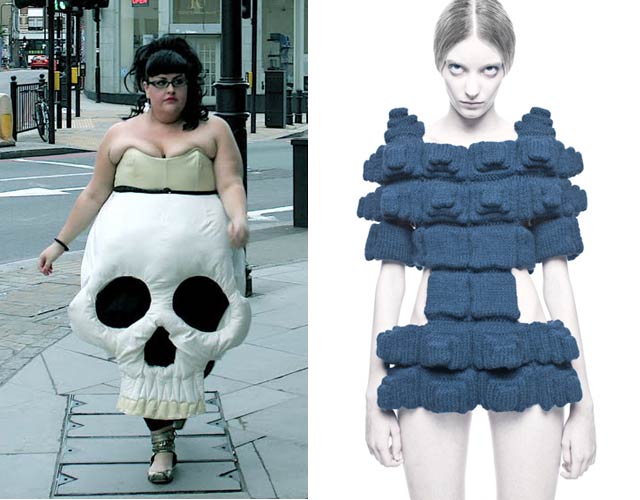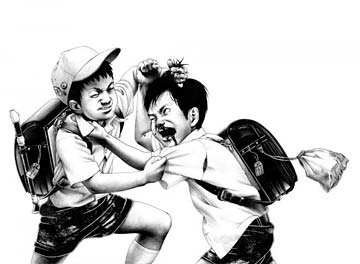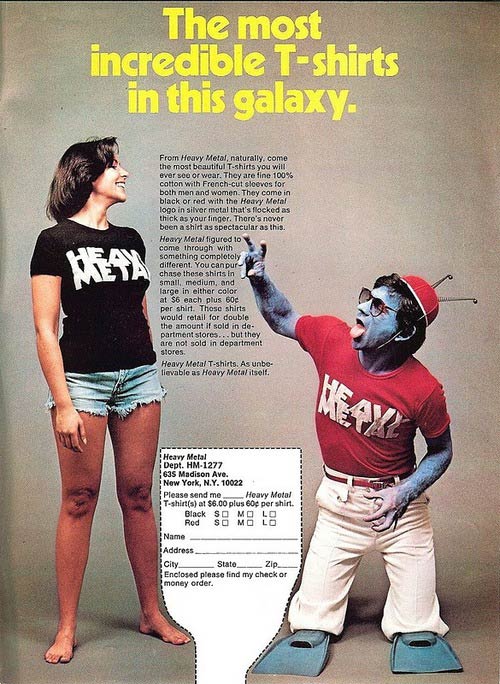fashion
‘Everything you can imagine is real.’ –Picasso

{ Spring/Summer 1999, Mcqueen ended his show w/ model Shalom Harlow standin’ in a white dress on a rotatin’ platform, bein’ spray painted by robotic arms. }
The gently champing teeth

{ How many zippers does he have? “One million, millions, I don’t know — more than a million,” said Mr. Feibusch, 86, a zipper man going on 70 years. Anyway, he can find you a zipper. “Tell me what size and what length and I’ll give it to you within 30 seconds,” he vowed. | NY Times | Full story }
Helicopters, Rolls Royces with Louie VaTonne interior and

Dual Function Design, November 10, 2008
By B. Govern “Bee-Dot-Govern”This item has wolves on it which makes it intrinsically sweet and worth 5 stars by itself, but once I tried it on, that’s when the magic happened. After checking to ensure that the shirt would properly cover my girth, I walked from my trailer to Wal-mart with the shirt on and was immediately approached by women. The women knew from the wolves on my shirt that I, like a wolf, am a mysterious loner who knows how to ‘howl at the moon’ from time to time (if you catch my drift!). The women that approached me wanted to know if I would be their boyfriend and/or give them money for something they called meth. I told them no, because they didn’t have enough teeth, and frankly a man with a wolf-shirt shouldn’t settle for the first thing that comes to him.
I arrived at Wal-mart, mounted my courtesy-scooter (walking is such a drag!) sitting side saddle so that my wolves would show. While I was browsing tube socks, I could hear aroused asthmatic breathing behind me. I turned around to see a slightly sweaty dream in sweatpants and flip-flops standing there. She told me she liked the wolves on my shirt, I told her I wanted to howl at her moon. She offered me a swig from her mountain dew, and I drove my scooter, with her shuffling along side out the door and into the rest of our lives. Thank you wolf shirt.
Pros: Fits my girthy frame, has wolves on it, attracts women Cons: Only 3 wolves (could probably use a few more on the ‘guns’), cannot see wolves when sitting with arms crossed, wolves would have been better if they glowed in the dark.
{ Amazon.com }
Scope, infrared
In the era of globalization, the land of the samurai and the salaryman has acquired a strange new identity. Japan now shows itself to the world as a country of “pink-clad girls, animated fantasies, and winking Kitty logos,” writes Christine R. Yano, a professor of anthropology at the University of Hawaii.
Kawaii, or “Japanese cute,” has become a global phenomenon. The rage for cute stretches from the prepubescent haunts of the world’s shopping malls to the catwalks of haute couture. At New York City’s Fashion Week last year, one show featured the work of 30 cutting-edge designers inspired by Hello Kitty, the iconic mouthless cartoon kitten that engendered Japanese cute. In Times Square, shoppers flocked to a newly opened Sanrio Luxe boutique peddling diamond-encrusted Hello Kitty watches and fine luggage.
Sanrio is the company that launched Hello Kitty and the whole cute phenomenon in the 1970s. Founder Tsuji Shinitarou saw the cartoon figure as “the Japanese cat that would overtake the American mouse,” according to Yano. He is the de facto father of “pink globalization.”
‘For me, the summer will be pure gray — mother-of-pearl gray, very pale gray. To me, this is the big statement for summer. Then we have light blue, light turquoise, lots of pink.’ –Gianni Versace

Donatella Versace, tiny, sculpted and forever blonde, was standing backstage after her menswear show at the Teatro Versace in Milan in June, receiving polite congratulations from a handful of editors and friends. The scene was positively dead compared with Versace shows a decade ago: no celebrities posing with Donatella for paparazzi, no bodyguards holding back the throngs, and no pals swilling champagne. Donatella’s brother Santo, in his usual charcoal suit with black turtleneck, came back for a few minutes to shake some hands. Her husband, American-born Paul Beck, tall and tan, stood alone in the corner; no one even noticed him. It all felt feeble, pathetic—a sad, soulless charade to promote something that no longer exists.
The nonscene is a reflection of how far the Italian fashion house has fallen since its founder’s death. When Gianni Versace was murdered on the front steps of his Miami mansion in 1997, the company immediately announced that his strong-minded sister, Donatella, would take over as creative director and his brother, Santo, would be CEO. The decision made sense at the time. The luxury fashion business was soaring, thanks to the new wealth of the Internet boom, and Gianni Versace was a favorite of the bling set, with his flashy designs, celebrity friends, and lavish lifestyle. The company was poised to become a luxury megabrand like Gucci, Giorgio Armani, and Louis Vuitton.
Instead, Donatella plunged into profound drug addiction and made erratic business and creative decisions. While competing fashion brands turned into global powers, Versace has watched its sales plummet from $1 billion in 1996 to less than half that today. Major retailers such as Neiman Marcus and Bergdorf Goodman have dropped the line. The company has lost both its prestige and design influence.
Starting in 2003, after what Santo described as “seven years of woes,” the Versace siblings acknowledged they couldn’t run the company by themselves and hired a string of outside managers to straighten out the mess. But the outsiders failed too—in large part, Versace sources say, due to Donatella’s and Santo’s resistance to change.
photo { Jessica Craig-Martin }
‘ I love to go to a lot of rock ‘n’ roll concerts. I see the audiences and they inspire me.’ –Donatella Versace

{ The spring/summer 2010 round of catwalk shows, which ended last month, was a watershed moment for the bloggers and the fashion industry. In New York, as photograph after photograph appeared of Tavi, a 13-year-old blogger from the suburbs of Chicago [above photo], embracing famous designers such as Yohji Yamamoto and Alexander Wang, it suddenly became clear that the fashion establishment must now share shoulder space with, as one blogger has put it, “outsiders looking in”. | Financial Times | Continue reading }







